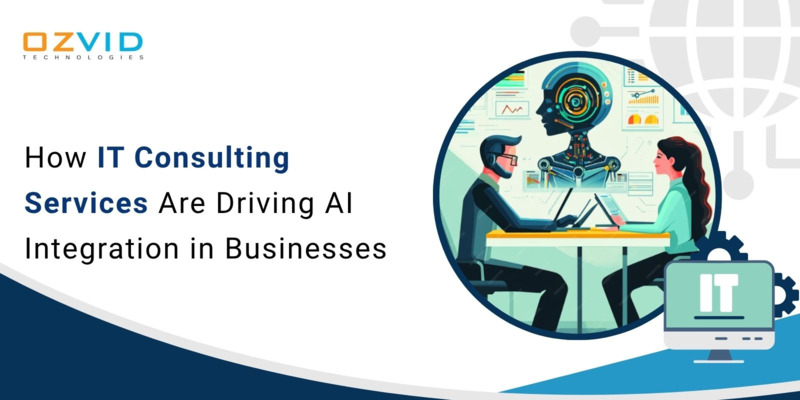- Nov 13, 2025
Share this post on:

Did you know that the global oil and gas market is projected to reach USD 32.7 billion by 2034, at a CAGR of 10.10%. The oil and gas industry is undergoing a transformational shift driven by digital technologies, with cloud computing at the forefront.
Cloud solutions enable companies to manage vast data volumes, optimize exploration and production, and improve decision-making through scalable, flexible, and cost-effective platforms. This technological evolution is helping the sector meet increasing demands for efficiency, safety, and compliance.
Key Takeaways:
- Cloud computing boosts operational efficiency and cuts costs with scalable, on-demand resources.
- Real-time data access and AI-driven analytics improve decision-making and optimize production.
- Edge and hybrid cloud solutions enable reliable operations in remote or offshore locations.
- Cloud fosters collaboration across teams and accelerates innovation and flexibility.
- Strong security, regulatory compliance, and sustainability focus are vital for successful cloud adoption.
Reasons Why Cloud Computing is Becoming Essential for the Oil and Gas Industry
Cloud computing is rapidly becoming a cornerstone for the oil and gas industry due to several critical factors that address its complex operational challenges and evolving market demands.
Massive Data Generation and Management:
The industry’s exploration, drilling, and production activities produce vast amounts of data from sensors, seismic surveys, and equipment monitoring. Traditional data centers struggle to store and process this data efficiently. Cloud computing offers virtually unlimited storage capacity and powerful processing capabilities to handle these large datasets, enabling quicker insights and better decision-making.
Cost Efficiency and Capital Optimization:
Investing in on-premises infrastructure is capital-intensive and often inflexible, with high costs for hardware, maintenance, and upgrades. Cloud platforms provide pay-as-you-go models, allowing companies to convert capital expenditures into operational expenses. This financial flexibility is crucial, especially in an industry marked by fluctuating commodity prices and market volatility.
Enhanced Collaboration Across Geographies:
The oil and gas industry operates on a global scale with diverse teams working remotely from exploration sites, offshore rigs, refineries, and corporate offices. Cloud computing enables seamless collaboration through centralized data access and real-time communication tools, breaking down geographic silos and speeding up workflows.
Scalability to Match Workload Demands:
Exploration and production cycles can be highly variable, with peak demands during drilling campaigns or seismic data analysis. Cloud platforms can easily scale resources up or down based on these needs, ensuring optimal performance without overspending on idle infrastructure during slower periods.
Integration of Advanced Technologies:
Cloud computing facilitates the adoption of artificial intelligence, machine learning, and big data analytics, which are transforming operations. Predictive maintenance can reduce unplanned equipment downtime, reservoir simulations can improve recovery rates, and automated safety monitoring enhances workplace security. These innovations require significant processing power and data storage, easily provided by cloud environments.
Improved Disaster Recovery:
In such a high-risk industry, protecting critical data against loss from natural disasters, cyber attacks, or technical failures is vital. Cloud-based disaster recovery solutions offer rapid data backup and restoration capabilities, reducing downtime and ensuring continuous operations.
Environmental and Regulatory Compliance:
Increasingly strict environmental regulations require detailed monitoring and reporting. Cloud platforms enable more efficient data collection, analysis, and submission processes, helping companies stay compliant while showcasing their commitment to sustainability.
Support for Digital Transformation Initiatives:
Many oil and gas companies are pursuing digital transformation to modernize their operations and improve competitiveness. Cloud computing acts as the backbone for these initiatives by providing the infrastructure needed for IoT integration, digital twins, and advanced data services.
Components of Cloud Computing in Oil and Gas
Cloud computing in oil and gas industry is composed of several key components, each critical to supporting the industry's complex and varied operational needs. Understanding these components helps explain how cloud technology integrates seamlessly with oil and gas workflows.
Infrastructure as a Service (IaaS):
This foundational layer provides virtualized computing resources, including servers, storage, and networking, over the internet. In oil and gas, IaaS supports the massive computational power needed for seismic data processing, reservoir simulation, and real-time operational analytics, eliminating the need for expensive on-site hardware. Companies can quickly provision resources to handle peak workloads associated with exploration or production without investing in physical infrastructure.
Platform as a Service (PaaS):
PaaS offers a flexible environment for developers to build, test, and deploy customized applications that cater to specific oil and gas industry requirements. For example, engineers can create applications to monitor drilling parameters or automate data integration from various sensors on rigs. This component accelerates innovation by providing pre-configured tools, development frameworks, and database management systems without the complexity of setting up the underlying hardware or software.
Software as a Service (SaaS):
SaaS delivers fully managed software applications via the cloud, accessible from anywhere with an internet connection. In oil and gas, SaaS solutions include asset management platforms, compliance reporting tools, and workforce safety management systems. These applications simplify deployment and updates, reduce upfront software costs, and enable users to leverage advanced functionalities such as real-time data visualization and analytics without complex installations.
Edge Computing:
Given that oil and gas operations often occur in remote or offshore locations where latency and connectivity can be challenges, edge computing extends cloud capabilities by processing data near the site of collection. Sensors and devices on drilling rigs or pipelines can analyze data locally and send summarized insights to the cloud, ensuring quicker response times for critical decisions such as detecting equipment failure or adjusting production parameters.
Big Data Analytics and Artificial Intelligence:
This component leverages cloud-powered analytics platforms to process and interpret the enormous volumes of data generated across exploration, drilling, production, and distribution. AI and machine learning algorithms enable predictive maintenance by analyzing patterns from sensor data, optimize reservoir management through sophisticated modeling, and improve safety by identifying potential hazards in advance. The cloud provides the high-performance computing environment necessary for these complex analyses.
Data Storage and Management:
The cloud offers scalable and secure data storage solutions that accommodate the enormous and growing datasets produced by the oil and gas industry. These storage systems ensure data integrity, backup, and rapid retrieval, which are essential for compliance, operational continuity, and historical analysis.
Security and Compliance Tools:
Cloud providers integrate advanced cybersecurity features including encryption, identity and access management, continuous monitoring, and threat detection. These tools help oil and gas firms safeguard proprietary data and meet stringent regulatory requirements worldwide.
DevOps and Automation Tools:
Cloud environments support DevOps practices that enable continuous integration, continuous deployment (CI/CD), and automated testing of applications specific to oil and gas operations. Automation accelerates software updates, configuration management, and infrastructure provisioning, facilitating rapid innovation and operational stability.
Benefits of Cloud Computing in Oil and Gas
Cloud computing delivers a wide array of benefits that are transforming operations, efficiency, and strategic capabilities in the oil and gas industry. Its impact extends across exploration, production, logistics, and compliance, helping companies achieve both short-term goals and long-term digital transformation.
Improved Operational Efficiency:
Cloud platforms provide real-time data access and analytics, enabling faster and more accurate decision-making. By consolidating data from diverse sources such as sensors, seismic surveys, and production equipment, cloud computing reduces delays caused by data silos or manual processes. This means teams can identify production bottlenecks, optimize drilling parameters, and respond swiftly to operational anomalies, ultimately improving overall productivity.
Cost Reduction and Financial Flexibility:
Transitioning to cloud infrastructure eliminates the need for heavy upfront investments in on-premises data centers and reduces ongoing maintenance expenses. The pay-as-you-go pricing model allows oil and gas companies to align IT spending with actual usage, which is especially valuable given the cyclical nature of the industry. Companies can also avoid the costs associated with hardware obsolescence by leveraging continuously updated cloud services.
Enhanced Data Integration:
The cloud breaks down traditional barriers between departments and partners by providing a centralized platform where data is standardized and easily accessible. This fosters improved collaboration among geologists, engineers, operators, and management regardless of their physical location. Collaborative workflows supported by cloud computing shorten project timelines and accelerate innovation.
Scalability and Flexibility:
Cloud environments allow companies to scale computing resources dynamically to match operational demands, whether they are ramping up seismic analysis or managing production surges. This flexibility enables oil and gas firms to handle fluctuating workloads without paying for idle capacity, making IT infrastructure more efficient and responsive.
Advanced Analytics and Predictive Maintenance:
By harnessing big data analytics and AI-powered algorithms available through cloud platforms, companies can predict equipment failures before they occur. Predictive maintenance reduces unexpected downtime, extends asset lifespans, and lowers repair costs. This proactive approach to maintenance also contributes to safety by preventing hazardous equipment failures.
Improved Safety and Risk Management:
Cloud-based monitoring systems aggregate data from a wide network of sensors and equipment to provide continuous oversight of operations. Real-time alerts and predictive analytics help identify potential safety risks such as gas leaks, equipment malfunctions, or environmental hazards. Faster detection and response improve worker safety and reduce the likelihood of costly accidents.
Regulatory Compliance and Reporting:
Managing compliance in the oil and gas sector requires rigorous data tracking and reporting to meet environmental and safety standards. Cloud computing simplifies this process through automated data collection, secure storage, and easy generation of compliance reports. This reduces administrative burdens and the risk of non-compliance penalties.
Disaster Recovery and Business Continuity:
Cloud solutions offer reliable backup, replication, and disaster recovery options that protect critical operational data from loss due to natural disasters, cyberattacks, or hardware failures. This resilience ensures business continuity, even in adverse conditions, minimizing costly interruptions.
Support for Digital Innovation:
The cloud serves as a foundation for emerging technologies such as IoT, digital twins, augmented reality, and blockchain within oil and gas operations. These innovations drive new levels of operational insight, cost savings, and environmental stewardship, pushing the industry towards a more sustainable and technology-driven future.
Cloud Computing in Oil and Gas: Top Use Cases
Cloud computing is revolutionizing the oil and gas industry by enabling a variety of transformative applications that improve efficiency, safety, and decision-making. Here are the top use cases where cloud computing is making a significant impact:
Streamlined Exploration:
Cloud computing accelerates the processing of large datasets from seismic surveys and geological studies, helping identify potential drilling sites more quickly and accurately. This reduces exploration costs and shortens project timelines by enabling geoscientists to analyze complex subsurface data in near real-time.
Reservoir Management:
The cloud allows integration and real-time analysis of geological and production data to build and update reservoir models dynamically. This supports simulation of various extraction scenarios, optimization of drilling strategies, and maximization of oil recovery rates with precise forecasting capabilities.
Advanced Simulation:
Oil and gas operations require huge computational power for simulations to assess operational risks, optimize drilling plans, and forecast production. Cloud platforms provide scalable, on-demand computing resources for these intensive tasks without the need for costly supercomputers, enabling more frequent and detailed modeling.
Supply Chain Optimization:
Managing materials, equipment, and inventory across global operations is complex. Cloud computing enhances visibility and coordination, reducing delays and streamlining procurement and distribution processes. This leads to improved efficiency in both upstream and downstream supply chains.
IoT Integration:
The use of IoT devices with cloud infrastructure facilitates continuous monitoring of equipment, pipelines, and environmental conditions. Data from sensors is collected and processed in the cloud, enabling real-time tracking, predictive maintenance, and rapid response to anomalies, enhancing operational safety and reducing downtime.
Predictive Maintenance:
Cloud-based analytics leverage machine learning models to predict equipment failures before they occur. This proactive approach minimizes unexpected breakdowns, optimizes maintenance schedules, and reduces operational costs.
Digital Twins:
Cloud computing enables the creation of virtual replicas of physical assets such as rigs and pipelines. These digital twins allow simulation, monitoring, and optimization of assets in real time, improving maintenance planning and operational efficiency.
Remote Collaboration:
Cloud platforms provide unified data access and collaboration tools that connect teams across geographies. This connectivity accelerates decision-making and innovation, allowing experts to jointly analyze data and adjust operations swiftly.
Regulatory Compliance:
Cloud systems automate data collection and generate reports required for environmental and safety regulations. This reduces administrative efforts and helps ensure adherence to standards, mitigating compliance risks.
Enhanced Security:
Oil and gas companies use cloud services to securely store sensitive data and implement disaster recovery solutions, ensuring business continuity and data integrity in case of failures or cyber threats.
Challenges in Cloud Computing for Oil and Gas
While cloud computing presents impressive advantages for the oil and gas industry, its adoption comes with a set of significant challenges that companies must carefully address to maximize value and minimize risks.
Data Security and Privacy Concerns:
The oil and gas sector handles highly sensitive operational data, intellectual property, and trade secrets, making data security paramount. Moving data to the cloud raises fears about unauthorized access, cyberattacks, and breaches. Ensuring robust encryption, multi-factor authentication, continuous monitoring, and compliance with stringent industry and governmental regulations is critical to protect this data.
Integration with Legacy Systems:
Many oil and gas companies still rely on legacy IT infrastructure and operational technology that were not designed for cloud environments. Integrating these existing systems with modern cloud platforms can be complex and costly, often requiring customized solutions or hybrid cloud approaches to enable a phased transition without disrupting operations.
Real-Time Data Processing:
Operations are frequently located in remote areas such as offshore rigs, deserts, or deepwater sites where stable internet connectivity is limited or unreliable. Cloud computing’s dependence on internet access can pose challenges for real-time data transfer and analytics. The industry often combines cloud use with edge computing, which processes data locally before syncing with the cloud, but this adds architectural complexity.
Application Performance Issues:
While cloud promises scalability, some oil and gas applications require very high-performance computing and very low latency, which may not always be feasible with public cloud setups. Ensuring applications run smoothly and scale effectively when bearing massive datasets or complex simulations requires careful cloud architecture design.
Cost Management and Predictability:
Although the cloud can reduce capital expenditure, managing operational expenditure in a pay-as-you-go model can become complex. Unexpected spikes in data processing or storage can lead to higher costs. Accurate cost forecasting and monitoring tools are necessary to avoid budget overruns.
Regulatory Compliance:
The oil and gas industry is subject to various environmental, safety, and data protection regulations that vary by country and region. Cloud providers and users must ensure compliance with these regulations, which sometimes restrict where data can be stored or how it must be handled, complicating multi-cloud or global deployments.
Management and Workforce Adaptation:
Transitioning to cloud computing requires changes across organizational processes, skill sets, and culture. Employees and IT teams need training on new cloud tools and security protocols. Resistance to change and lack of cloud expertise can slow deployment and reduce adoption benefits.
Vendor Lock-in:
Reliance on specific cloud providers’ proprietary technologies can create vendor lock-in, limiting future flexibility and increasing switching costs. The oil and gas sector needs interoperable, open standards-based cloud solutions to avoid dependency risks.
Complex Data Governance:
Managing data quality, consistency, lifecycle, and access controls across hybrid and multi-cloud environments adds complexity. Strong governance frameworks and clear policies must be established to ensure data reliability for operational and strategic decisions.
Future Trends in Cloud Computing for Oil and Gas
The future of cloud computing in the oil and gas industry is poised for rapid evolution as emerging technologies and shifting industry demands drive innovation. Several key trends will shape how cloud adoption deepens and expands, enabling companies to enhance operational excellence, sustainability, and competitive advantage.
Integration of AI/ML:
AI and ML will become even more deeply embedded into cloud platforms, enabling smarter automation and predictive analytics. These technologies will drive improvements in reservoir characterization, drilling optimization, and equipment maintenance by providing real-time insights and prescriptive recommendations. The cloud’s scalable computing power is essential for processing large datasets to train and deploy AI models efficiently.
Expansion of Edge Computing:
As oil and gas operations often occur in remote, harsh environments, edge computing will grow to process data locally at drilling sites, offshore platforms, and pipelines, reducing latency and dependence on connectivity. Combining edge computing with centralized cloud resources in hybrid architectures will allow operators to balance data sovereignty, performance, and cost. This approach will enable more reliable operations and real-time decision-making closer to the source of data generation.
Greater Adoption of Digital Twins:
Digital twin technology - virtual replicas of physical assets, such as rigs, pipelines, and refineries - will become more prevalent, powered by cloud infrastructure. These dynamic models allow operators to simulate scenarios, predict failures, optimize performance, and plan maintenance more effectively. The cloud’s processing capabilities and storage capacity make it easier to maintain accurate, up-to-date digital twins that integrate live data from IoT sensors.
Enhanced Transparency:
Blockchain technology integrated with cloud platforms will provide immutable records and enhanced security for supply chain management, contracts, and transactional processes within the oil and gas ecosystem. This will foster greater trust, traceability, and fraud reduction - critical for managing complex, multi-party operations.
Energy Efficiency Focus:
With growing global emphasis on environmental responsibility and regulatory pressures, cloud computing will play a central role in supporting sustainability initiatives. Cloud-powered analytics will optimize energy consumption, monitor emissions, and improve waste management. Furthermore, many cloud providers are committing to renewable energy powering their data centers, enabling the industry to reduce its carbon footprint indirectly.
Cybersecurity Measures:
As cyber threats continue to escalate, cloud providers and oil and gas companies will invest heavily in advanced security frameworks. Future cloud platforms will feature more sophisticated threat detection, AI-driven anomaly identification, zero trust architectures, and automated incident response to safeguard critical infrastructure and sensitive data.
Conclusion
At OZVID Technologies, we recognize that cloud computing is a transformative force redefining the oil and gas industry’s future. The vast data generated, complex operational needs, and evolving regulatory landscape demand innovative, scalable, and secure solutions. Through our expertise in managed cloud services, AWS infrastructure management, and customized cloud solutions, we empower oil and gas companies to unlock the full potential of cloud computing, improving efficiency, enhancing safety, reducing costs, and accelerating digital transformation.
Our dedicated team combines deep industry knowledge with advanced cloud technologies to design and implement solutions tailored to your unique challenges. From seamless cloud migration and real-time data analytics to robust security and compliance management, OZVID Technologies is committed to supporting your journey towards a smarter, more resilient energy future.
Choosing OZVID means partnering with a reliable and innovative technology leader focused on delivering measurable business value while simplifying your cloud adoption. We aim to help you harness the cloud’s power to drive operational excellence, foster collaboration, and achieve sustainable growth in this dynamic sector. Contact us today for more information.
Frequently Asked Questions
1. How secure is cloud computing for oil and gas data?
Cloud computing security in the oil and gas sector is robust and continually improving. Leading cloud providers implement advanced encryption techniques to protect data both at rest and in transit, ensuring critical operational and proprietary information is safeguarded from unauthorized access or cyberattacks.
2. Can cloud computing operate effectively in remote oilfield locations?
Yes, cloud computing can effectively support operations even in remote oilfield locations through a combination of edge computing and hybrid cloud models. Edge computing processes data locally at the site or rig, reducing latency, minimizing bandwidth usage, and enabling real-time decision-making despite limited or intermittent internet connectivity. Aggregated insights and data are then synced securely to centralized cloud platforms when connectivity permits. Hybrid cloud architectures allow companies to keep critical data and sensitive workloads on private on-site or regional clouds while leveraging public cloud scalability for less sensitive tasks.
3. What kind of cost savings can oil and gas companies expect from cloud computing?
Oil and gas companies can realize significant cost savings through cloud adoption by reducing upfront capital expenditure on physical IT infrastructure, such as data centers and servers, and lowering ongoing maintenance and upgrade costs. The cloud’s pay-as-you-go model allows companies to align IT spending directly with operational demand, avoiding over-provisioning and idle resources.
4. How quickly can oil and gas companies migrate to the cloud?
Migration timelines vary widely based on company size, scope of operations, existing IT infrastructure, and strategic priorities. Many companies adopt a phased approach, beginning with pilot projects or migrating non-critical workloads to build cloud capabilities and gain experience. Hybrid cloud strategies are common, allowing a gradual transition while maintaining legacy systems. Full migration of complex and sensitive systems, including integration with operational technology, can take months to several years.
5. What impact does cloud computing have on environmental sustainability in oil and gas?
Cloud computing positively impacts environmental sustainability by enabling oil and gas companies to optimize energy consumption, enhance emissions tracking, and improve waste management. Cloud-enabled big data analytics and IoT integration allow real-time monitoring of equipment efficiency and environmental conditions, facilitating proactive adjustments that reduce resource waste and emissions.















